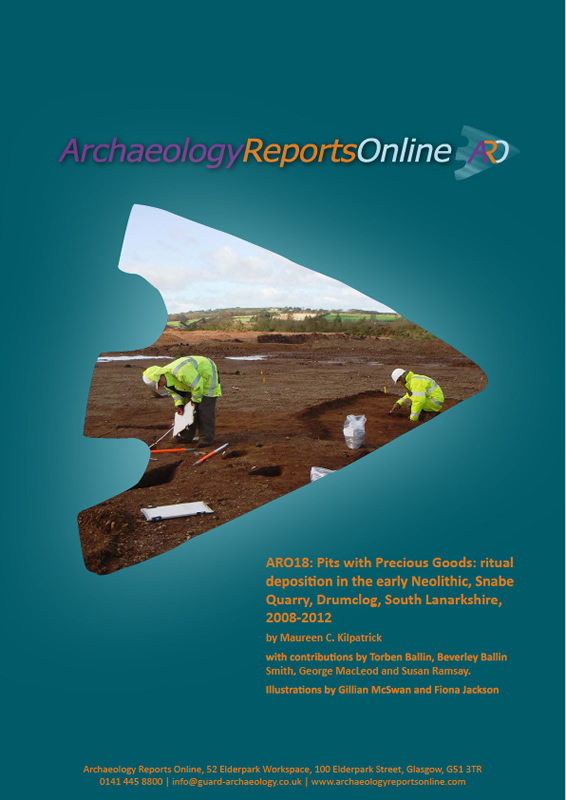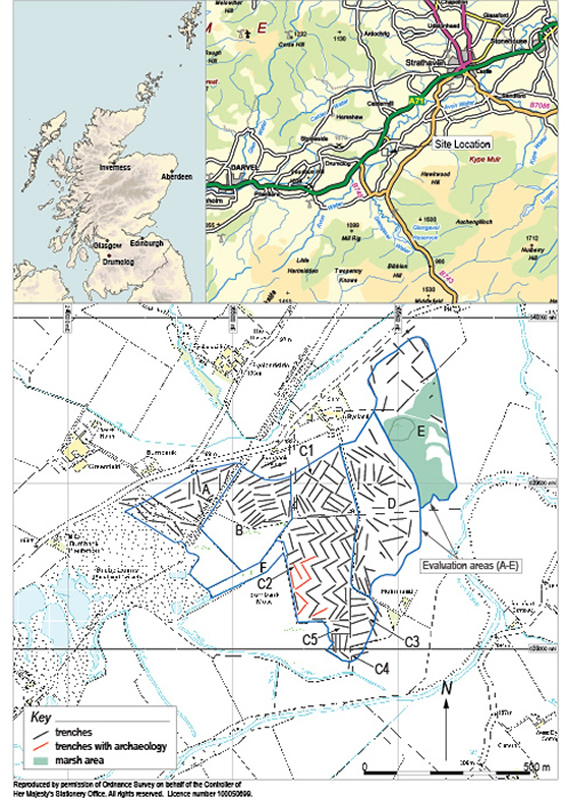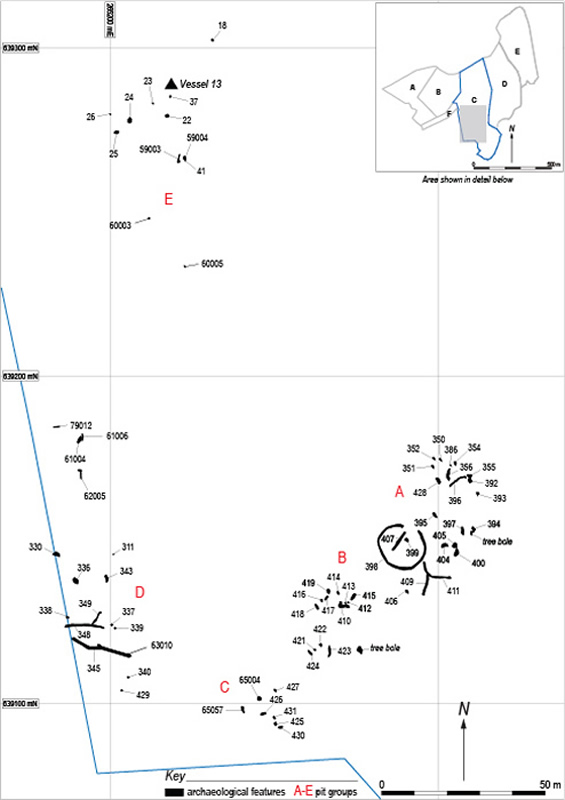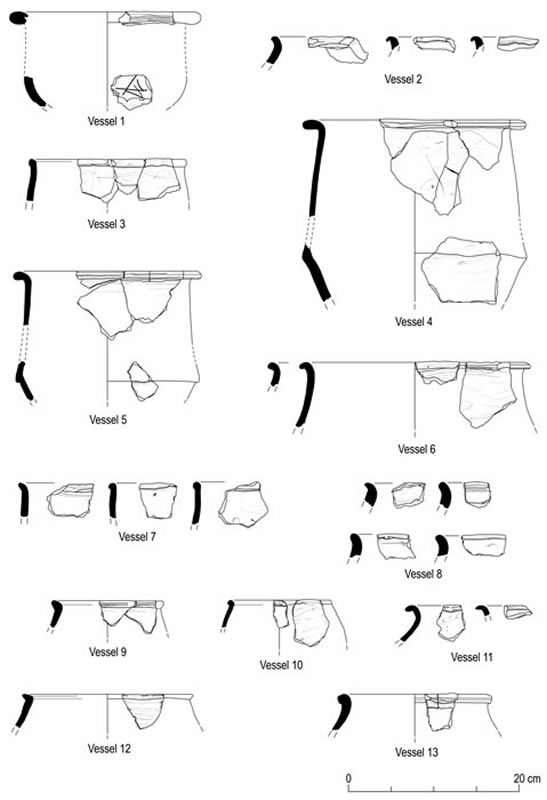Archaeological excavations in advance of an extension to Snabe Quarry revealed pits and structures from the late Mesolithic (eighth millennium BC) until the early Neolithic (fourth millennium BC) when a concentration of activity coincided with the importation of pitchstone from the Isle of Arran and a polished stone axe fragment from Cumbria. Between 2008 and 2012, archaeologists from Glasgow University Archaeological Research Division and later GUARD Archaeology Ltd, led by Maureen Kilpatrick, undertook a series of excavations at Snabe Quarry near Drumclog in South Lanarkshire, for Lafarge Tarmac Ltd, which uncovered five clusters of prehistoric pits and an undated sub-circular enclosure.
One cluster comprised sixteen pits to the east of the sub-circular enclosure, one of which yielded a late Mesolithic radiocarbon date. Another cluster of fourteen pits were also found to the west of the enclosure while further to the south-west another small cluster of seven pits contained domestic hearth charcoal waste. Radiocarbon dates from the early seventh millennium BC and early fourth millennium BC from this charcoal indicate the widely differing times this place in the landscape was occupied. The later date, from the early Neolithic, was recovered from a pit that also yielded fragments from two early Neolithic carinated bowls used for cooking. Fire-cracked stones found within the pit suggest it had been used as a fire-pit for heating and preparing food. Along with charcoal from hazel, willow and oak, hazelnut shells and wheat grants were also recovered, again indicating food consumption. Another cluster of eight pits to the north-west of this, also revealed a scatter of domestic hearth waste.
The northernmost cluster of fifteen pits was the most interesting, containing not only hearth waste, hazelnut shells and emmer/spelt wheat grains, but fragments of ten early Neolithic carinated bowls. The pottery vessel fragments all seemed to have been carefully placed within one of the pits, along with several flint blades, pitchstone and Cumbrian tuff flakes. No fire-cracked stones were found within this pit, which was radiocarbon dated to the early fourth millennium BC. Another two pits in this cluster yielded similar radiocarbon dates, one of which also contained a fragment of polished stone axe made from Cumbrian tuff. Another carinated pottery vessel was found to the north of this cluster.
All the pottery vessels recovered from the excavations at Snabe Quarry were cooking vessels, many with food residues. They comprised carinated bowls, a type of pottery commonly found on early Neolithic domestic sites across Scotland and the British Isles in general. All but one of the pottery vessels was found in two pits in different parts of the site. Both of these pits are likely to have been fire-pits used during communal feasting events. There are a number of signs that indicate that the disposal of ten vessels in one pit was a deliberate act to 'close' this pit and the activities associated with it. There was a higher percentage (50% more) of surviving rim sherds than is normally expected from a prehistoric assemblage. It could be argued that some or all of these vessels were hurriedly made to be specifically used for cooking in the fire-pits, accounting for their poor manufacture and limited use. After the feasting events, the pots were most likely intentionally broken and placed inside the pits. The same might be said of the early Neolithic lithics from the same pit, which included exotic materials such as pitchstone and tuff from as far away as Arran and Cumbria. The distribution of pots, their breakage and the apparent selection of specific pieces to be deposited in the pits then appears to have been deliberate. The radiocarbon dates appear to show this event took place sometime between 3787 and 3631 BC.
Investigations in the Biggar area of South Lanarkshire have shown that Arran pitchstone, Cumbrian tuff and carinated pottery frequently occur together, and this artefactual combination could be referred to as an early Neolithic cultural 'package'.
The combination of large quantities of carbonised hazel nutshell and wheat grains is also suggestive of a Neolithic date for this sites since barley (which was entirely absent) generally becomes the dominant cereal on Scottish sites from the Bronze Age until the medieval period. The earliest of the radiocarbon dates, however, suggest that occupation at Snabe commenced in the late Mesolithic period.
The full results of this research, ARO18: Pits with Precious Goods: ritual deposition in the early Neolithic, Snabe Quarry, Drumclog, South Lanarkshire, 2008-2012, by Maureen Kilpatrick, has just been published, and is now freely available to download from the ARO website - www.archaeologyreportsonline.com




